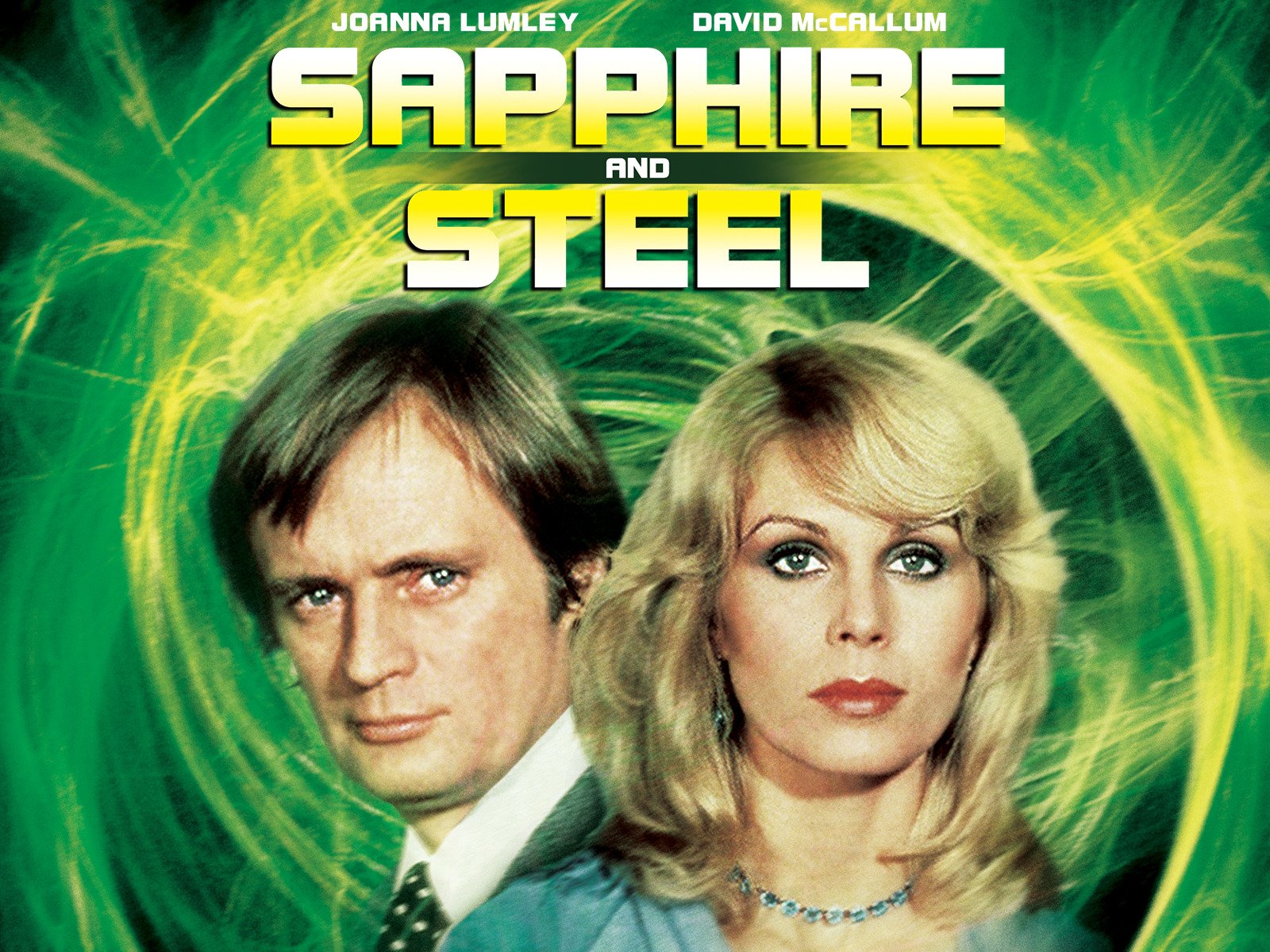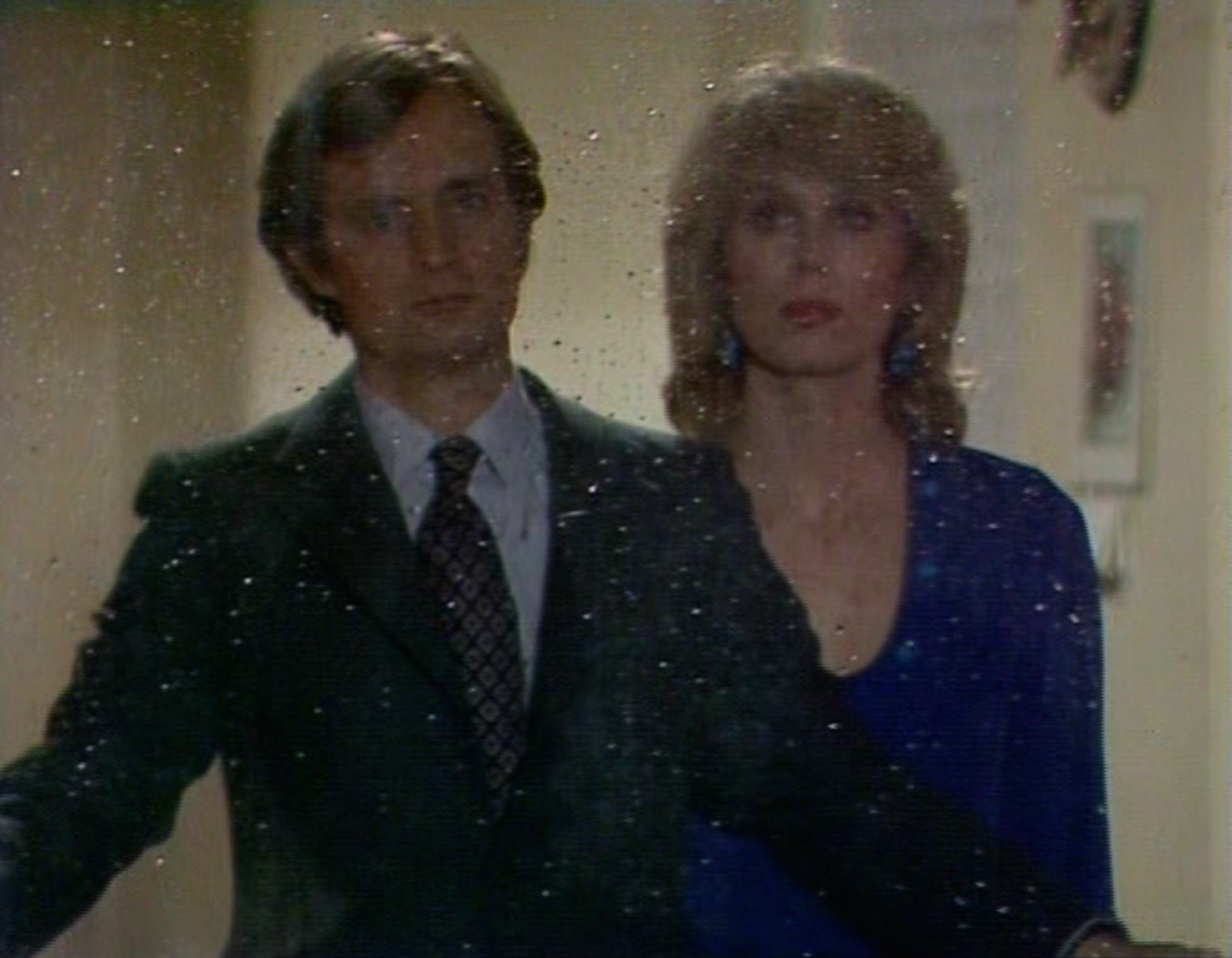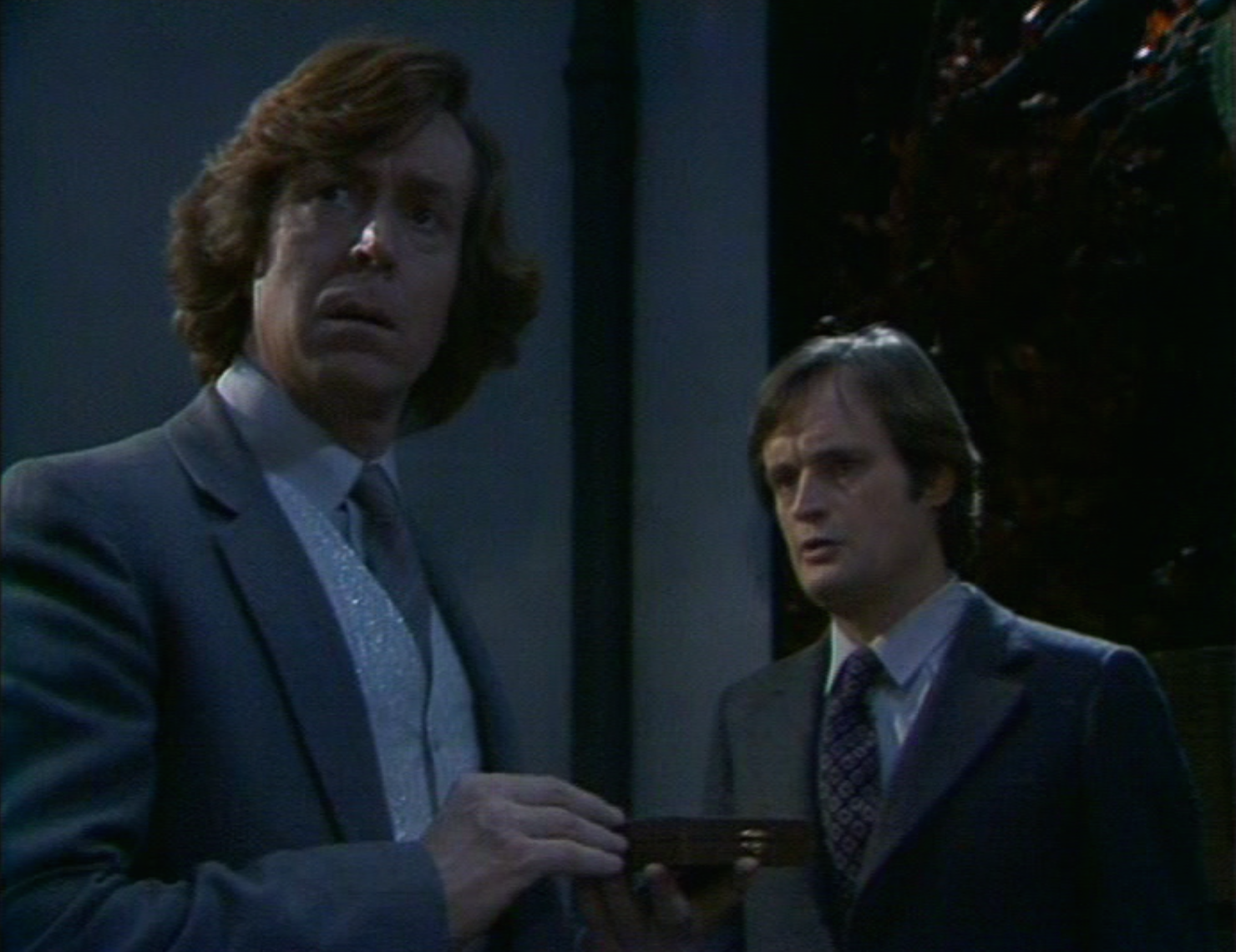Back in the Seventies, ITV, our third channel, had a reputation for vulgar populism that was even worse than it has today. ITV was the go-to place for in-yer-face cop shows, boorish sitcoms, and sequinned variety knees-ups. It wasn’t the channel you’d have expected to find anything as conceptually ambitious and strange as Sapphire And Steel.
That Sapphire And Steel is remembered so vividly now is a testament to its blazing originality. Whether it’s the ghostly sight of a World War One soldier walking the platform of a disused railway station or the besuited landlord with no face or the sight of our heroes looking out into space from a floating cafe window, Sapphire And Steel was a series that seared itself into the memories of those who watched and loved it.
Many fictions, fondly recalled from our childhoods, prove a crushing disappointment when revisited as grown-ups. But not Sapphire And Steel. It may have been produced on a threadbare budget, but little has dated from its 34 episodes and six broadcast stories. What remains beguiling and fascinating about it is its proud, strutting opaqueness, its stubborn desire not to explain. Even before we discovered that the Doctor was a Time Lord, we knew he was an alien, we knew he was 450 years old (or thereabouts), and that he lived in this box called a TARDIS. But Sapphire And Steel never ever offered us those crumbs. We were told nothing about our central characters except that they were ‘elements’, who dealt with disturbances in the fabric of time.
“I didn’t want to give too much away,” said creator PJ Hammond, “because once you say where they’ve come from, you’re committed.”
That Peter J Hammond could storm his way through those 34 episodes without ever caving in to pressure to illuminate his two enigmatic leads is kind of admirable. It’s hard to imagine a series as gleefully obstinate and elliptical as Sapphire And Steel being given the green light now without some panicky execs butting in demanding a chunk of backstory and a sliver of sexual tension.
Hammond’s series never did tell all. Indeed, it never told anything at all. Even if star Joanna Lumley believed that Sapphire and Steel were aliens, that was nothing to do with Hammond. “I’ve not known for 28 years,” he said in 2007, “and no-one else seems to know, and no-one else seems to have cared.”
Sapphire And Steel took its small screen bow on 10 July 1979. It had been commissioned under the title The Time Menders, and was originally mooted for a children’s slot on ITV. Thames had already turned it down when the channel’s midlands provider, ATV, took it on. Luckily ATV was a company that thought big. Its chairman was the flamboyant Lew Grade, who’d helped shepherd another singularly authored oddity, The Prisoner, to production ten years before. It was Grade that sought the commercially attractive David McCallum and Joanna Lumley for the lead roles.
Both came with high price tags, which gobbled up much of Sapphire And Steel‘s slight budget, but it was never a series that needed much more money spent on it. As an almost totally studio-bound show (only one story took them into the open air, and even then it seemed strangely wrong), Sapphire And Steel made a virtue of its lowly production values. Claustrophobic and stylised, it probably looks more like televised theatre to modern eyes, and indeed it’s not hard to spot something of JB Priestley’s plays, An Inspector Calls and Time And The Conways, in Sapphire And Steel‘s makeup.
The true radicalism of the series, apart from its bloody-minded reluctance to explain who its protagonists were, was in its shunning of traditional antagonists. There are no monsters or bad guys or indeed violence in Sapphire And Steel. Instead, time itself is the evildoer at the centre of the series’ six stories.
“There is a corridor,” Sapphire tells a child, whose parents have disappeared, in the first story, “and the corridor is Time. It surrounds all things. You can’t see it – only sometimes. Perhaps a glimpse. And then it’s dangerous. You cannot enter into Time, but once in a while, Time can enter into the present… break in… burst through.”
None of the six Sapphire And Steel tales were ever given titles, more by accident than design. Although some fans prefer their own self-spawned titles such as ‘Escape Through A Crack In Time’ or ‘The Creature’s Revenge’, the stories have become known more recently by their DVD monikers – ‘Assignment One’, ‘Assignment Two’ et al.
“If they would have said at the time: ‘Could you think of titles? I would have done that. But it just wasn’t thought of at that moment,” Hammond reflected in 2007.
Eventually put into an early evening slot, only ‘Assignment One’ lets slip Sapphire And Steel’s origins as a (admittedly sophisticated) family show but ‘Assignment Two’ was an altogether darker and more ominous tale. Set in a deserted railway station, the story has time feeding on the resentment of the dead, using as its focus Private Sam Pearce, a World War One soldier shot and killed 11 minutes after peace was declared in 1918. The eight-part serial threw up some striking, memory-searing images, such as Steel strung up on barbed wire and submariners choking to death on a submarine. And all of this in the time slot where Emmerdale now screens.
But although Hammond’s scripts were wordy and somewhat opaque, there was, according to McCallum, still a desire to keep the series penetrable to the ordinary ITV viewer.
“My mother used to have a cleaner, Mrs Puttock,” he remembered, “and she saw the first episode and said to me: ‘I loved it, but I didn’t understand it’, so we always tried to make the stories Puttock-proof.”
The six-part ‘Assignment Three‘ (screened over two weeks in the January of 1981) is arguably Sapphire And Steel‘s shakiest effort. A heavy-handed passion piece about the morality of meat-eating (two humans from an animal-free future travel back to our time), it suffers from some wonky effects (Steel being attacked by a feather pillow is the series’ rock bottom moment) and some starched acting from the visiting guest cast: “Being a bit of a greenie, I suppose I was allowing my own politics to interfere with the telling of the story,” Hammond said some years later.
‘Assignment Four,’ screened immediately after, is a more sure-footed, eerier story. This fat-free four-episoder boasted a memory-branding villain in The Shape, a faceless being that is present, somewhere, in every photograph ever taken. Again, it’s stocked with moments that linger long, from the cliffhanger where a woman, trapped inside a photograph, is burned alive to the sepa-coloured Victorian children dancing anachronistically in the modern day.
Series Three of Sapphire And Steel, which would consist of a single six-part story, was scheduled for the autumn of 1981, but Hammond, worn down through overwork, declared himself unavailable. Instead, two other names came in on scriptwriting duty. Anthony Read was very well versed in science fiction storytelling, having script-edited Doctor Who for two seasons, while Don Houghton had penned two Doctor Who episodes – ‘Inferno‘ and ‘The Mind Of Evil’ – during Jon Pertwee’s time.
Lighter in tone than the other stories, ‘Assignment Five‘ owes more to the drawing room mysteries of Agatha Christie than the MR James-meet-JB Priestley influences of Hammond’s work. Set at a Thirties-themed party in the modern day, our two time agents soon discover that one of the guests plans to manipulate time to prevent the death of her husband, 50 years before.
“It’s not the direction I would have gone in,” reflected Hammond about the story some refer to as ‘Doctor McDee Must Die’, “but it’s nice to have a variation. People enjoy that episode.”
Although recorded as part of series three, ‘Assignment Six’ wouldn’t see the light of transmission until August 1982, a year after the third season aired. During 1981, ATV lost its licence as part of the regular review of the ITV regional structure, and on 31 December, it handed over broadcasting duties to the newly-formed Central Television. The series was one of a number of unaired shows Central inherited from ATV, and they weren’t in any hurry to put out another company’s leftover programming, so Sapphire And Steel‘s sayonara story had to wait.
Set at a deserted (there’s that word again) motorway service station, ‘Assignment Six‘ was aways intended to be Sapphire And Steel‘s last hurrah. The story climaxed with the duo suspended, helplessly, in space and time, the victims of a trap by agents of a mysterious “higher authority”.
“A further series was actually thought of, but only in a vague sense,” Hammond said later. “During the writing of Story Six, I felt that we had gone as far as we could for the time being. I believed that their fate was to spend a number of Earth years in the trap. This means that they could emerge again whenever the need arises, perhaps being even older.”
But it wasn’t to be. Despite various attempts through the years, Sapphire and Steel remain trapped in that motorway cafe in space. In 2005, however, the brand was briefly revived in a series of audio plays, produced by Big Finish. McCallum and Lumley passed on returning, and so David Warner and Susannah Harker stepped into the roles, with David Collings returning to his TV role as Silver and Mark Gatiss on board as Gold.
Like McCallum and Lumley, Hammond couldn’t be tempted back for more Sapphire And Steels, but he did make a return to SF writing when Russell T Davies commissioned him to pen two Torchwood episodes (‘Small Worlds’ and ‘From Out Of The Rain’). Sadly for genre fans, though, Hammond has spent much of the past three decades on such landfill TV as The Bill, Dangerfield and Midsomer Murders, which just seems a gargantuan waste of a dazzling talent.
Sapphire And Steel did return to the headlines, fleetingly, in July 2016, when Luther creator Neil Cross divulged that he was prepping a reboot of the series. “I’m planning to – it looks like I’m going to – relaunch Sapphire And Steel,” Cross told the Nerdist Writers’ panel podcast. “There’s a broadcaster in the UK that’s very, very keen to do it.
Worryingly – or not, maybe – all has gone quiet since then, but it’s difficult to imagine the Sapphire And Steel that was making it onto TV screens nowadays. Could a writer of even Neil Cross’s eminence withstand the inevitable pressure to widen its scope or provide needless backstory?
Sapphire And Steel is not only the best SF show ITV produced, it’s one of the best television programmes British television has ever produced, SF or otherwise. Any education in British science fiction is criminally incomplete without it.
Sapphire And Steel is now available to buy on Network DVD.



